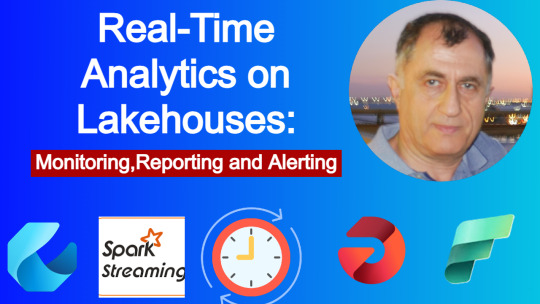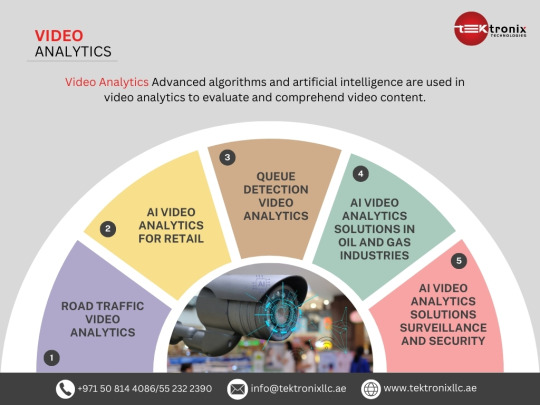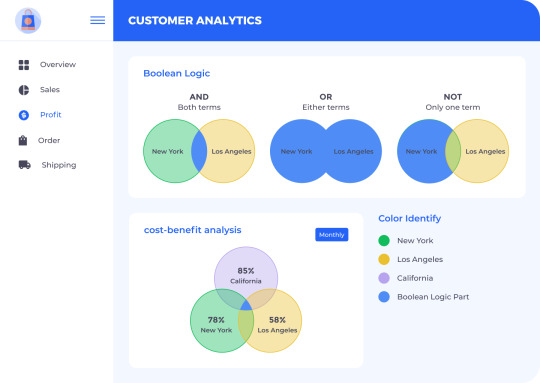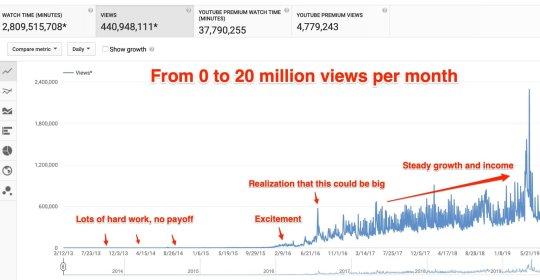#realtime analytics
Link
#mobile technology#construction#mobile apps#construction project management#construction industry#LiveSite#subcontractors#realtime monitoring#digital construction#construction solutions#workforce planning#collaboration#realtime analytics#digitalisation#construction management#project management professional
0 notes
Link
#SAP BWHANA#sap bw#streaming process chain#SAP DWC#real-time#realtime reporting#analytics#data warehousing#data warehouse cloud#sap services#SAP Service Provider#sap solutions#tech solutions
2 notes
·
View notes
Text
Attention Business Leaders! 📈 In today's fast-paced market, data analytics is the key to unlocking unparalleled customer experiences. By harnessing the power of data, businesses can tailor services like never before, ensuring satisfaction at every touchpoint. Dive into our latest insights on how this strategy is revolutionizing customer engagement.
#customer experience#data#data analytics#data driven#customer insights#personalization#omnichannel#big data#realtime#getondata
1 note
·
View note
Text
Cách xem Realtime trên Analytics: Lưu lượng truy cập thời gian thực
“Cách xem Realtime trên Analytics” là vấn đề rất nhiều doanh nghiệp quan tâm. Trong ngành Digital Marketing, việc theo dõi và đánh giá hiệu suất trang web đóng vai trò quan trọng giúp bạn có thể đưa ra những quyết định về chiến lược chính xác. Và Realtime trên Google Analytics chính là công cụ hữu ích giúp doanh nghiệp nắm bắt ngay lập tức những tương tác của người dùng và xu hướng phát triển của trang web.
Xem thêm: https://www.ohay.tv/view/cach-cai-dat-google-analytics-4-bang-google-tag-manager-thanh-cong/HOSLAK0ZZ0
0 notes
Text
Analytics and BI
Traqops helps businesses improve their overall productivity and performance by automating various tasks and processes. In turn, this can lead to increased profits and competitive advantage. Integrated analytics for connected & smart facilities. Insightful data leads to intelligent decisions.

1 note
·
View note
Text

How Is Real-Time Data Analytics Helping in Increasing Business Revenue?
1 note
·
View note
Note
Do you sometimes change the title of your videos after you upload them? It's very possible that I could be misremembering, but I swear it happens every once and a while.
Yeah I do! I started doing it recently actually. I watched an interview with Veritasium & Mister Beast, in which Beast said that his team prepare two or three titles and thumbnails before they launch a video and swap them out if a video underperforms. YouTube gives you realtime updates on video analytics so you can change it, leave it for a few hours, and see if it increases clickthrough rate. I saw that interview and I was like
Whoa
Even Mister Beast doesn't expect to get it right first time, every time.
I realised I'd been quite proud with YouTube. Like "Huh I don't need to use analytics because I make special art clever videos for clever people" - but I was doing that out of pride and pretension. And I also expected to get it right first time, every time. But nobody does! And that's okay!
So now I do experiment a bit with thumbnails and titles. The Hidden Rules of Modern Society was languishing, then I changed the title and thumbnail and it shot up to over a million and brought in a bunch of new viewers! So it works!
369 notes
·
View notes
Text
Podcasting "So You've Decided to Unfollow Me"

This week on my podcast, I read “So You’ve Decided to Unfollow Me,” my Medium describing the joys of writing to attract the audience of people who want to read what you want to write.
https://doctorow.medium.com/so-youve-decided-to-unfollow-me-7452c96b4772
I’ve been blogging for more than 20 years, but I’ve been writing for publication for even longer than that, so I can remember the emergence of blogging and what it meant for magazine writers. The point of magazines, broadly, was to identify a demographic that advertisers wanted to reach and hire writers who’d produce material to entice those people to become readers.
By contrast, the point of blogging was to produce the idiosyncratic, personal mix of topics, formats and styles that the writer enjoyed, in hopes of attracting readers whose preferences overlapped with the writer’s. Blogging wasn’t just about becoming widely read — it was about finding your people.
When advertising came to blogging, it was grounded in this ethos: “Here is a writer who has attracted an audience who share a sensibility and a collection of interests that are otherwise hard to reach; if that’s who you want to reach, you can buy ads on this publication.”
The promise back then was that the “long tail” of interests and publications enabled by blogging would be matched with a long tail of advertisers who — like pre-blogging writers — had been hamstrung by the difficulty of reaching their own niche audiences.
What changed? Programmatic, behavioral ads: ads that were dynamically served based on surveillance data about the reader. For example: there was once a bubble in the clickthrough price for ads for lawyers who represented people who’d been poisoned by asbestos and were now sick with mesothelioma:
https://web.archive.org/web/20060328041115/http://www.cwire.org/2006/03/23/updated-highest-paying-adsense-keywords/
Writers who had interesting things to say about mesothelioma cleaned up, and some writers pursued the pre-blogging project of turning their attention to mesothelioma to capitalize on the bubble, and cheaters crowded in:
https://www.theregister.com/2006/10/06/google_adsense_worm/
So the advent of content-based ads distorted the way bloggers blogged, tempting writers to pursue subjects based on advertising rates rather than authentic interests, but surveillance ads supercharged this phenomenon. That’s because surveillance ads were served based on the reader, not the content, which meant that writers seeking to cash in succeeded by attracting the broadest possible audience.
If your publication could serve as a funnel for broad, undifferentiated audiences, the realtime auction ad markets would segment your audience for you, finding the valuable mesothelioma ad targets and serving them, along with all your other readers, based on the willingness of advertisers to pay.
This is the commercial pressure that turned the esoteric web into the generic web of sensationalism, clickbait and cute animals. It didn’t just transform what writers wrote — it also transformed how writers and readers related to one another.
Writers, obsessing over their analytics reports, worked to maximize “engagement” irrespective of the quality of that attention, because the more readers the could suck in, the higher the likelihood that one of those readers would turn out to be a jackpot, someone who had the right rare disease or interest in a mortgage that would pay out at 10x or 100x over the median reader.
This changed reader expectations, too. In the early days of blogging, readers would get in touch to say, “I’m so glad to have found someone who shares some or all of my strange, niche interests.” Often, they’d create their own publications that reblogged and elaborated the posts from your blog that interested them the most, adding their own stories tailored to their interests.
A whole suite of tools sprang up to make this process smoother: feed readers with keyword filters and “folksonomy” tools for tagging posts to make it easy for others to find (or ignore) posts (this is how Tumblr works today, and it’s delightful).
Today, it’s more likely that a reader will get in touch to say, “I love it when you write about X, but I’m not interested in Y — please do less of that, because your Y posts are cluttering up my feed.” In a sensible world, these readers would have powerful tools to screen out Y, but because social media platforms are committed to automated, algorithmic “curation” (rather than readers creating their own filters by following or ignoring writers, keywords and tags), readers end up treating writers as balky machine-learning tools, messaging them with “thumbs-down” signals to try to train them to be better tailored to the reader’s interests.
I get a lot of this, because I publish online in a bunch of different modes — long essays, quick reactions, streams of seemingly disconnected imagery from arcane and ephemeral sources. It’s pretty common for a reader to write in to say, “I love your vintage ad posts, but I’m not interested in the essays” (or vice versa).
To be clear, that’s fine. On a functional, authentic interest-driven internet, these readers would have great tools to just see one and not the other, and I go to great lengths to enable this, publishing on many different platforms in different ways to enable filtering:
https://pluralistic.net/2021/01/13/two-decades/#hfbd
After all, I’m not a balky machine-learning system, I’m a writer pursuing his authentic interests. There’s a reason for the mix that I post — a method that turns one kind of post into the other kinds:
https://doctorow.medium.com/the-memex-method-238c71f2fb46
Yes, even the ephemeral images:
https://doctorow.medium.com/divination-7cfec2b1a6b8
Sometimes, readers will write to me in a huff to announce that they’re not going to read me anymore. To be clear, that is fine. Every reader has their own threshold for when a writer’s mix of subjects and formats is sufficiently interesting for them to follow along.
It’s wonderful to have readers who want to read what you want to write. It’s great to have readers who want to argue with the substance of what you write and engage with you on it. But a reader who wants you to write something different? Ugh.
I’m a reader, too. I follow a lot of different writers in a lot of different media, and I, too, wish for better filters. It’s not entitled or arrogant to be interested in only some of a writer’s work. But if that is the case, the right response is to figure out how to filter our the uninteresting material, or learn to ignore it, or stop reading.
It’s okay to stop reading me! I’m not required reading. No one is required reading. If you can’t find the writer you want to read, try being that writer. That’s what I did, and it’s great.
Here’s a link to the podcast episode:
https://craphound.com/news/2022/08/08/so-youve-decided-to-unfollow-me/
And here’s a direct link to the MP3 (hosting courtesy of the Internet Archive, they’ll host your stuff for free, forever):
https://archive.org/download/cory-doctorow-podcast-433-so-youve-decided-to-unfollow-me/Cory_Doctorow_Podcast_433_-_So_Youve_Decided_to_Unfollow_Me.mp3
Here’s my podcast feed:
https://feeds.feedburner.com/doctorow_podcast
Image:
Sascha Kohlmann (modified)
https://www.flickr.com/photos/skohlmann/14449245760/
CC BY-SA 2.0
https://creativecommons.org/licenses/by-sa/2.0/
[Image ID: A double exit-door, open to reveal a Matrix-style code waterfall. Over the door is a green exit sign with a green halo.]
33 notes
·
View notes
Text
What should I look for in an ERP solution
Everyone says that they have an ERP solution at a wide range of price points. How do I choose one for my SME
Longevity
Check if the ERP solution would meet your requirement 5 years from now when you grow say 5X, add new manufacturing locations, add different lines of business. ERPs not only need to address the growth volume of your business but need to adapt to the business process changes required as you grow.
How easy it is to use
Can your average user learn and adapt easily, this is more relevant for SME organizations trying to embrace ERPs , as they are not in a position to employ specially trained skills for ERP implementation or operations. Your cloud ERP should be intuitive to use and as simple and easy as an e-commerce website. Make sure that the user experience is simple and follows the typical standards of any web application.
A SaaS model helps
A SaaS based ERP allows you to start with very low opex costs and minimal investment. Your opex increases as your business grows and you have a more rational approach towards investment in technology.
What about open source
One major advantage of open source solutions is that there is no license cost to acquire it. Other than that, open source solutions really don't provide any additional benefits to the end customer, most of whom would like to concentrate on their business, rather than trying to change or modify the source code. Secondly since it is open source, support and feature enhancements are driven by the community and the community should be as eager as you to add a feature .
Check the total cost of ownership of open source solutions.
1.Requirement understanding costs
2.License costs
3.Hosting or cloud costs and all the licenses required to run the open source
4.Support costs
5.Cost and reliability of making changes in the solution
The connected EcoSystem
Organizations need to leverage on the connected ecosystem. Does your ERP provide open and easy connectivity to marketplaces, statutory bodies, vendor and customer systems, banks and financial intermediaries. Does it have the capability to provide APIs for easy and quick integration and implementation.
What about AI in ERP?
A number of ERP vendors have started incorporating AI in their ERP solutions, and most of them are Cloud ERP providers. It is impossible to incorporate the infrastructure required for AI on an stand alone ERP system, the costs become prohibitive. Cloud ERPs can build AI capabilities leveraging the cloud infrastructure and share the same infrastructure with all the users.
There are already a number of use cases where AI can be used in an ERP, for instance read unstructured documents / emails using AI and convert them to Sales orders, Expenses, GRN in the ERP. Flag transactions which seem irregular by nature, detect fraud or suspicious transaction, increase planning accuracy using AI, continuous auditing, realtime evaluation of your business partners and Ai driven business analytics and Insights
To conclude
Though most ERP vendors will try and match your requirement document either "out of the box" or by so called "minor" customisation, you need to look beyond the current requirements and ensure that your ERP vendor has a track record of adapting and leveraging trends in technology so that you will be able to stay ahead in the future.
Visit Our Site To Know More :-https://proteustech.in/
#erp#erpcloud#erp software#cloud erp#saas#erpdevelopment#ERP software#software services#proteusvision#vision AI#Vision ERP#ERPsolution#cloud computing#sap erp#cloud accounting#cloud solutions#cloud nonsense#VisionCRM
2 notes
·
View notes
Text
What is Google Analytics? 5 points that Could Help You to see your website report clearly?
Google Analytics is an application of Google in which we can check the report of our website. Like how many views are there on your website, how many likes are on your website, how many people are following you on your website, how many people are watching your website live, which gender people are on your website, which age people are your Looking at the website In this you will get every report of your website. And if you want to extract any report then you can also export it in excel sheet or in any other file. Its advantage is that it shows all the updates of your website immediately. And in this the report is shown so well that you will understand the whole report. You can also change the method of report, you can select the format in which you want. You can also see such a report in this that how many people are viewing your website from mobile and how many people are viewing your website on the web. In this blog, we will tell you about those options of Google Analytics which you need to know.
1) Home
In Google Analytics Home, you get a rough report of your website. This means you will be able to see directly here how many people are following you on your website, how many are liking, and how many views are coming, you will also see the active users, but here too you will see only the user and for more information For this you have to go inside Google Analytics. In this, you will also see the country of the user, but for complete information, you will have to go inside Google Analytics. In this, you will also see the time of the user, and at what time your users come to your website. You will also see which page the user has visited the most. In this, you will also see from which device your user is viewing your website. You will get all this information little by little, for more information in Home, you will have to go to the option inside Google Analytics.
2) Customization
Dashboard
In the dashboard, you will get the option to create many types of reports. In this, you have to select the format of a report. You will select the format from which you will start getting the report on your website in that format. In this you will see new users of your website, this is very important for you. Accordingly, you can edit your website. For example, if fewer users are coming to your website, then you need to work on the website. In this, you get to know how many users are increasing or how many users are decreasing on your website every day. Then comes the session, in this you see how many sessions are running on your website and are running in which country. Then the browser shows you in which browser your website is running. Like Chrome, Fire-Fox, etc. Then there is the revenue, in this, you see how much you have earned from your website.
3) Realtime
Overview
In a real-time overview, you can see how many people are currently on your website. How many people have come to your website by referring Referrer means how many people have come by clicking on your shared link, then there is top social traffic, in this you see how many people are viewing your social media account in the present time. Or viewing your post. Then there is the top keyword, in this, you see how many people have come to your website by searching keywords. Which keyword is most searched by people? Then there is the top active page, on this, you will see that most of the people on your website are on which page of yours. Then it is the top location, in this you will see that more people are viewing your website than which country in the present time.
4) Audience
Overview
You’ll find all the details about your audience in the audience overview. In this, you will get users, users mean that the people who read your post well are the users who stay on your website for maximum time. Then there is the new user, in this you get to see the user who has started visiting your website daily a short time ago. Then there is the session, it means how many pages people have opened and viewed on your website. Then there is the number of sessions, it means how many pages a user reads. Then there is the page view, in this you see how many views have come on your website or page.
User-flow
User flow is the most important part of Google Analytics. Because in this you see where your users have come from and then which page they have gone to on your website. All the details are shown to you through a graph so that you can easily understand what your audience wants. You can also see how many people have come from social media, how many people have come from the referral link, and how many people have come from bloggers. Along with this, it is also seen that the user came to your website first and went to which page, how much time was spent on which page, how many people saw full, how many people saw half, it will also be seen how many people searched your website. have come In a way, this is the best reporting option on Google Analytics.
5) Behavior
Overview
In the Behavior overview, you’ll see what your audience does on your website. The first thing in this is the page-view, in this you will see how many views have come on the page of your website. Then there is the unique page-view, in this you will see the views that come to your website every day, who read your posts daily, who check the updates of your website daily. Then there is the Average time on page. This means that each user reads your page for approximately how long. Then there is the exit rate, in this you will see how many people came to your website and went back. Then there is the page-view, in this you will see how many views are on your page, you will see it in the graph. Then there is the page-title, in this you will see how many people have come to your website after searching your title. In this, you can also see by day, month, hour, week, how many people have come in the hour, how many people have come in the month, how many people have come in the day, how many people have come in the week. You will find all these details in Behavior.
Note
in this post, we have told you all the details about google analytics in detail. but in this, we have told about the details about only those topics which are important for you. well, there are many topics in this, but all the topics are the same but it is repeated again and again, so i have written a topic only once. so that you can easily understand google analytics. and i did not take such topics which are not necessary. because the same option is given over and over again in google analytics.
About this blog
In this post, we have told you about Google Analytics, what is Google Analytics? How will Google Analytics work for you? How can you remove the report of your website from this? For more such information read the rest of our posts.
google analytic!
2 notes
·
View notes
Text
How to build Real-Time Analytics on Microsoft Fabric Lakehouse tables
Are you curious about how to build #RealTime Analytics on top of ever-changing Lakehouse tables? How to build a smart alerting and monitoring system instantly reacting to the changes in your data?
In this video, I explain how to use Delta Lake Change Data Feed, #Spark Structured Streaming, Event Streams and Data Activator in #MicrosoftFabric to build an end-to-end #RealTime Analytics System.
Check out here: https://youtu.be/RIpXnmQm8XA

0 notes
Text

Realtime AI Video Analytics Solutions: Enhancing Security and Efficiency with Cutting-Edge Technology
By leveraging the capabilities of artificial intelligence advanced video analytics, these solutions provide unparalleled insight and capabilities. They are also revolutionizing ways that companies monitor and analyze videos in real-time. In the forefront of this technology revolution are Tektronix Technologies, a leading supplier of Artificial Intelligence in Real-Time Video Analytics Solutions designed to equip businesses with cutting-edge technology for surveillance.
#technology#solution#abu dhabi#ajman#security#ras al khaimah#fujairah#software#management#dubai#video analytics#ai#artificial intelligence
0 notes
Text




Transform the way you understand your customers with our Customer Analytics Dashboard! It's like having a crystal ball for your business, revealing patterns and guiding your strategy. 📊 Dive into a world where data becomes your superpower – enhancing targeting, boosting sales, and so much more. 📈Step into a new era of informed product strategy and gain that competitive edge. The future is data-driven, and it starts here.
#data#data analytics#data science#data visualization#customer experience#datadriven#dashboard#business#predictive analysis#realtime#omnichannel#storytelling#getondata
1 note
·
View note
Text
Video Analytics Solutions
AvidBeam is your trusted partner for comprehensive video analysis solutions. From Realtime Video Analytics to Arabic License Plate Recognition and Personal Protective Equipment Detection
Video Analytics Solutions
About Company - AvidBeam® is an AI video analytics company that pushes the boundaries of video processing capabilities with big data distributed architecture. Its expertise in computer vision, deep learning, visualization and neural networks enable AvidBeam® to offer scalable video analytics solutions for security, safety and business intelligence applications to its customers.
AvidBeam team delivers video processing and analytics products cutting across various verticals and geographies including Smart Cities, Smart Retail, Transportation, Oil & Gas, Healthcare, Education, etc in the Middle East, Gulf and North America.Headquartered in the Netherlands with teams in the US, Egypt and Saudi Arabia.
The story started with spotting opportunities for computer vision that deliver value to business customers, make them feel safer and offer useful insights to their business. The revolution in Artificial Intelligence, deep learning and Big Data has enabled this vision.
Click Here For More Info - https://www.avidbeam.com/solutions/
0 notes
Text
11 WAYS TO GROW YOUR YOUTUBE CHANNEL (MARCH 2024)

Update: As of March 2024, these methods are still working and still helping many people grow their channels. My main channel is still getting upwards of 20 million views per month!
For many reasons, the information below is not well shared because people are worried that their competitors will find out and overtake them. When people find out the secrets and begin growing their channel, they do not want to share them. Even myself in the past was unsure about writing this out. I'm revealing everything in this guide!
First, I will give you the steps on how to grow YouTube channel, then, in the FAQS at the bottom, I'm revealing how to make money on YouTube.
QUICK BREAKDOWN: How to grow your YouTube channel – fast!

#1 Use a YouTube SEO and Growth Tool
TubeBuddy has helped me grow my channel from 0 all the way to 4 million subscribers. Through it's many features, you can optimize your videos for success on the YouTube algorithm. The extension is 100% free using the link below!
My favourite features include:
Keyword Explorer
Video Topic Planner
Best Time to Publish
A/B Testing
Bulk Metadata Updates
Get TubeBuddy Now!
#2 Learn how the YouTube algorithm works
Success on YouTube is essentially about mastering the YouTube algorithm. Not only do you need to produce excellent content, it has to be optimized for the algorithm. If you know how it works, your videos will skyrocket in views. This guide will teach you everything you need to know.
The basic steps include:
Focus on audience retention
Work on your watch time
Improve your clickthrough rate
Watch your analytics and tweak content
Watch your views fly!
FULL GUIDE BELOW
#3 Engage your audience and watch views grow!
Apart from the main factors in point #2, there are hundreds of others. The most important secondary factor is audience engagement. If YouTube sees an active audience, your chances of getting into recommended are greatly increased. YouTube wants users to interact with videos and become immersed in the experience.
Top Engagement Tips
Encourage subscribers to click the bell icon.
Ask your audience to comment below.
Post on a consistent schedule.
Pin a comment on the top and ask a question.
Create amazing content worth commenting on!
FULL GUIDE BELOW
HOW TO USE THIS GUIDE
Use the table of contents below to navigate around. This is a HUGE guide. It will take you from 0 to mastery. All for free. Please bookmark and come back as you grow your channel.
Before we start, it’s important to know that there are no shortcuts. Growing and creating a YouTube channel is a lot of work. Many people suffer from burnout and quit. I’ve had many ups and downs through the years, as is completely normal. But success is always just around the corner, especially after implementing the tips in this guide! Using a valuable YouTube SEO tool like TubeBuddy (a free chrome extension) and following the below instructions will be a huge help! Read my full TubeBuddy review here to learn more about it (and how to use it with this guide!).
And I truly believe that if you put your mind to something and are committed enough to succeed, you will make it happen. This guide will help you succeed faster and grow your YouTube channel fast!
The beauty about YouTube is that old videos still accumulate views every hour, even as days and months go on. For every new video that you post, you’re creating a new passive income source for months to come. You can literally watch in realtime as views come in and grow. It’s the best feeling in the world knowing that you can make enough money from YouTube to support yourself and be financially free!
HOW TO GROW YOUR YOUTUBE CHANNEL
The following information will help you grow your YouTube channel all the way from the beginning. And of course, how to make money on YouTube!
First, you need to make sure your channel theme and all content ideas are FIRE!
1. Come up with amazing ideas
First, you need to make sure your channel has a main theme.
The main theme of your channel has to be fun. And not just to you, but to an uninterested audience as well. Those are the viewers you need to think about every time you create a video. When a new viewer clicks a video, you have to assume they are only slightly interested and will click away within the first 5 seconds. You need to fight for them to stay on the video!
It needs to be exciting! You need to have amazing ideas. I personally keep all of my ideas written down in TubeBuddy’s topic planner and refer to them when I’m running low on content.
NEVER PRODUCE BORING CONTENT.
YouTube will reward you if you produce amazing content through the algorithm, guaranteed.
Think back to the basics about whether the content you’re putting out is exciting. And if you’re just starting out, keep in mind that your channel should do one of 2 things:
Entertain people
Entertain people
Or both.
Content has to be one of those two types in order to succeed on YouTube. I strongly believe that in order to create a successful YouTube channel, you need to entertain people. The algorithm will reward you if you do.
If you go informational, your chance of success is a little less, but you can succeed by earning the majority of your income outside of Adsense. Common ways include:
Merchandise
Courses
Subscriptions
Most big entertainment channels do this already. But if you have really solid fans, a smaller informations style channel can also work.
But if you want to earn earning thousands of dollars every day on Adsense, you’re going to need to make entertaining videos. Just open up your YouTube homepage and look at what is recommended to you. Most of it will be fun and entertaining. Just look at the trending tab:
0 notes